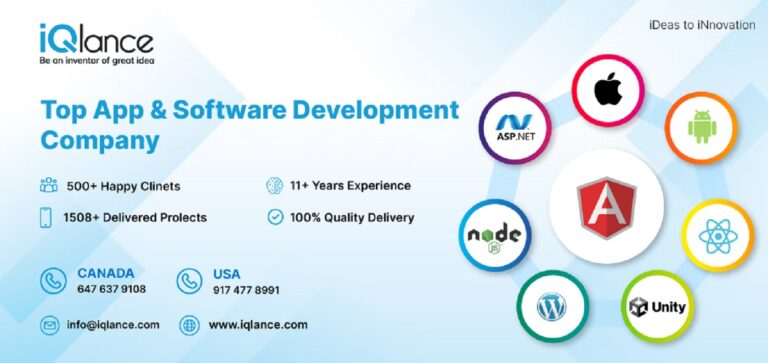Unleash the power of containerization with AWS Elastic Container Service (ECS).
Introduction to AWS Elastic Container Service (ECS)
Understanding AWS Elastic Container Service (ECS)
In today’s fast-paced world of technology, businesses are constantly looking for ways to improve their efficiency and scalability. One solution that has gained popularity in recent years is containerization. Containers allow developers to package their applications and all their dependencies into a single unit, making it easier to deploy and manage them across different environments. AWS Elastic Container Service (ECS) is a fully managed container orchestration service provided by Amazon Web Services (AWS) that simplifies the process of running containers at scale.
ECS is designed to help developers and system administrators deploy, manage, and scale containerized applications using Docker containers. It provides a highly scalable and reliable platform for running containers, allowing businesses to focus on their applications rather than the underlying infrastructure. With ECS, you can easily deploy and manage containers across a cluster of EC2 instances or use AWS Fargate, a serverless compute engine for containers.
One of the key benefits of using ECS is its seamless integration with other AWS services. ECS integrates with Amazon Elastic Load Balancer (ELB) to distribute incoming traffic across containers, ensuring high availability and fault tolerance. It also integrates with Amazon CloudWatch for monitoring and logging, allowing you to gain insights into the performance and health of your containers. Additionally, ECS integrates with AWS Identity and Access Management (IAM) for fine-grained access control, ensuring that only authorized users can access and manage your containers.
ECS provides two deployment options: EC2 launch type and Fargate launch type. With the EC2 launch type, you have full control over the underlying infrastructure as you run your containers on EC2 instances. This gives you the flexibility to customize the instances to meet your specific requirements. On the other hand, with the Fargate launch type, you don’t have to provision or manage any infrastructure. AWS takes care of all the underlying infrastructure, allowing you to focus solely on your applications.
To get started with ECS, you need to create a cluster, which is a logical grouping of EC2 instances or Fargate tasks. Once the cluster is created, you can define a task definition, which describes how your containers should be run. The task definition includes information such as the Docker image to use, the CPU and memory requirements, and any environment variables or volumes that need to be configured. You can then create a service, which is a long-running task that ensures that a specified number of instances of a task definition are running at any given time.
ECS also supports auto scaling, allowing you to automatically scale your containers based on metrics such as CPU utilization or request count. This ensures that your applications can handle increased traffic or workload without manual intervention. You can configure auto scaling policies to add or remove instances or tasks based on predefined thresholds, ensuring that your containers are always running optimally.
In conclusion, AWS Elastic Container Service (ECS) is a powerful and flexible container orchestration service that simplifies the process of running containers at scale. With its seamless integration with other AWS services, deployment options, and support for auto scaling, ECS provides a robust platform for deploying and managing containerized applications. Whether you choose the EC2 launch type or the Fargate launch type, ECS allows you to focus on your applications while AWS takes care of the underlying infrastructure.
Benefits of using AWS Elastic Container Service (ECS)
AWS Elastic Container Service (ECS) is a powerful and flexible container orchestration service offered by Amazon Web Services (AWS). It allows developers to easily run, manage, and scale containerized applications using Docker containers. In this article, we will explore the benefits of using AWS Elastic Container Service (ECS) and how it can help businesses streamline their application deployment and management processes.
One of the key benefits of using AWS Elastic Container Service (ECS) is its ability to simplify the deployment and management of containerized applications. With ECS, developers can easily package their applications into Docker containers and deploy them on a cluster of EC2 instances. This eliminates the need for manual configuration and setup, saving valuable time and effort.
Another advantage of using ECS is its seamless integration with other AWS services. ECS can be easily integrated with AWS Identity and Access Management (IAM), allowing developers to control access to their containers and resources. It also integrates with AWS CloudFormation, enabling developers to define and manage their infrastructure as code.
Scalability is another major benefit of using AWS Elastic Container Service (ECS). With ECS, developers can easily scale their applications up or down based on demand. ECS automatically manages the placement and scheduling of containers across the cluster, ensuring optimal resource utilization. This allows businesses to handle sudden spikes in traffic without any downtime or performance issues.
AWS Elastic Container Service (ECS) also offers high availability and fault tolerance. ECS automatically monitors the health of containers and replaces any failed containers with new ones. It also provides built-in load balancing capabilities, distributing traffic evenly across containers. This ensures that applications are always available and responsive, even in the event of failures.
Cost optimization is another advantage of using AWS Elastic Container Service (ECS). With ECS, businesses only pay for the resources they actually use. ECS allows developers to define the desired capacity for their containers, and automatically adjusts the number of instances based on demand. This eliminates the need for over-provisioning and helps businesses save on infrastructure costs.
Furthermore, AWS Elastic Container Service (ECS) offers a highly secure environment for running containerized applications. ECS integrates with AWS Key Management Service (KMS), allowing developers to encrypt sensitive data at rest and in transit. It also supports AWS PrivateLink, which provides secure and private connectivity between VPCs and AWS services.
Lastly, AWS Elastic Container Service (ECS) provides extensive monitoring and logging capabilities. ECS integrates with AWS CloudWatch, allowing developers to collect and analyze metrics, set alarms, and gain insights into the performance of their containers. It also supports integration with AWS X-Ray, enabling developers to trace requests and identify performance bottlenecks.
In conclusion, AWS Elastic Container Service (ECS) offers numerous benefits for businesses looking to deploy and manage containerized applications. From simplified deployment and management to seamless integration with other AWS services, ECS provides a powerful and flexible platform for running containers. With its scalability, high availability, cost optimization, security, and monitoring capabilities, ECS is a valuable tool for businesses looking to streamline their application deployment and management processes.
How to deploy and manage containers with AWS Elastic Container Service (ECS)
Understanding AWS Elastic Container Service (ECS)
AWS Elastic Container Service (ECS) is a highly scalable and fully managed container orchestration service provided by Amazon Web Services (AWS). It allows you to easily deploy, manage, and scale containers using Docker containers and the familiar AWS infrastructure.
To deploy and manage containers with AWS ECS, you first need to understand the basic concepts and components of the service. At its core, ECS is built around the idea of a cluster, which is a logical grouping of EC2 instances that run your containers. These instances are referred to as container instances and are managed by ECS.
To get started with ECS, you need to create a cluster. This can be done through the AWS Management Console or by using the AWS Command Line Interface (CLI). Once your cluster is created, you can start launching container instances within it. These instances can be EC2 instances that you provision yourself or instances that are managed by AWS Fargate, a serverless compute engine for containers.
Once your container instances are up and running, you can start deploying your containers onto them. This is done through the use of task definitions, which define the containers that make up your application, as well as the resources and configurations required for each container. Task definitions are stored in the Amazon Elastic Container Registry (ECR) or any other container registry that is compatible with Docker.
To deploy a task onto your cluster, you need to create a service. A service is a long-running task that ensures that a specified number of instances of a task definition are running and healthy at any given time. Services can be scaled up or down based on demand, and ECS takes care of load balancing and automatic scaling for you.
Managing containers with ECS is made easy through the use of the ECS console, CLI, or API. You can view the status of your tasks, monitor resource utilization, and perform actions such as stopping or restarting tasks. ECS also integrates with other AWS services, such as Amazon CloudWatch for monitoring and AWS Identity and Access Management (IAM) for access control.
One of the key benefits of using ECS is its integration with other AWS services. For example, you can use Amazon Elastic Container Service for Kubernetes (EKS) to run Kubernetes workloads on ECS. This allows you to take advantage of the scalability and reliability of ECS while using the familiar Kubernetes API and tooling.
In addition to EKS, ECS integrates with other AWS services such as Amazon Elastic Load Balancing (ELB), Amazon Virtual Private Cloud (VPC), and AWS CloudFormation. This allows you to build highly available and scalable containerized applications that can easily scale to meet the demands of your users.
In conclusion, AWS Elastic Container Service (ECS) is a powerful and fully managed container orchestration service that simplifies the deployment and management of containers. By understanding the basic concepts and components of ECS, you can easily deploy and manage your containers using the familiar AWS infrastructure. With its integration with other AWS services, ECS provides a scalable and reliable platform for running containerized applications.
Scaling and load balancing with AWS Elastic Container Service (ECS)
AWS Elastic Container Service (ECS) is a powerful tool that allows users to easily manage and scale containerized applications on the Amazon Web Services (AWS) platform. One of the key features of ECS is its ability to handle scaling and load balancing, which are crucial for ensuring that applications can handle increased traffic and demand.
Scaling is the process of adjusting the number of containers running an application based on the current workload. With ECS, scaling can be done automatically or manually, depending on the needs of the application. Automatic scaling is achieved through the use of ECS Auto Scaling, which allows users to define scaling policies based on metrics such as CPU utilization or request rates. When these metrics exceed a certain threshold, ECS will automatically add or remove containers to meet the demand.
Manual scaling, on the other hand, gives users more control over the scaling process. With ECS, users can easily adjust the desired count of containers for a specific task or service. This can be done through the AWS Management Console, the AWS Command Line Interface (CLI), or the AWS SDKs. Manual scaling is particularly useful when users want to quickly respond to sudden spikes in traffic or when they need to perform maintenance tasks on their application.
Load balancing is another important aspect of managing containerized applications. It ensures that incoming traffic is distributed evenly across multiple containers, preventing any single container from becoming overwhelmed. ECS provides built-in support for load balancing through its integration with Elastic Load Balancing (ELB). ELB automatically distributes incoming traffic to containers within an ECS service, based on the configured load balancing algorithm.
ECS supports two types of load balancers: Application Load Balancers (ALBs) and Network Load Balancers (NLBs). ALBs are ideal for HTTP and HTTPS traffic, as they can route requests based on content, host, or URL path. NLBs, on the other hand, are better suited for TCP and UDP traffic, as they can handle millions of requests per second with ultra-low latencies. Users can choose the appropriate load balancer type based on the specific needs of their application.
In addition to load balancing, ECS also provides service discovery capabilities. This allows containers within a service to discover and communicate with each other using DNS. Service discovery eliminates the need for manual IP address management and makes it easier to build and scale microservices architectures.
To summarize, AWS Elastic Container Service (ECS) offers powerful scaling and load balancing capabilities for containerized applications. With automatic and manual scaling options, users can easily adjust the number of containers based on workload demands. Integration with Elastic Load Balancing (ELB) ensures that incoming traffic is evenly distributed across containers, preventing any single container from becoming overwhelmed. Additionally, ECS provides service discovery capabilities, making it easier to build and scale microservices architectures. Overall, ECS is a valuable tool for managing and scaling containerized applications on the AWS platform.
Best practices for optimizing performance with AWS Elastic Container Service (ECS)
AWS Elastic Container Service (ECS) is a powerful tool that allows users to run and manage Docker containers on the AWS cloud. With ECS, developers can easily deploy and scale containerized applications, making it a popular choice for organizations looking to optimize their performance and efficiency. In this article, we will explore some best practices for optimizing performance with AWS ECS.
One of the first steps in optimizing performance with ECS is to carefully consider the size and configuration of your containers. It is important to strike a balance between container size and resource allocation. Oversized containers can lead to wasted resources, while undersized containers may result in poor performance. By monitoring and adjusting container sizes, you can ensure that your applications are running efficiently and utilizing resources effectively.
Another best practice for optimizing performance with ECS is to leverage the power of auto scaling. ECS allows you to automatically scale your container instances based on demand, ensuring that you have the right amount of resources available at all times. By setting up auto scaling policies, you can dynamically adjust the number of container instances based on metrics such as CPU utilization or request rates. This not only helps to optimize performance but also reduces costs by only using resources when they are needed.
In addition to auto scaling, it is important to properly configure your ECS cluster to maximize performance. One key consideration is the placement of your containers. By strategically placing containers on different instances within your cluster, you can distribute the workload and prevent any single instance from becoming overloaded. This can be achieved by using task placement strategies, which allow you to define rules for how containers are placed on instances. By carefully configuring these strategies, you can ensure that your containers are evenly distributed and that your cluster is running at peak performance.
Monitoring and logging are also crucial for optimizing performance with ECS. By monitoring key metrics such as CPU utilization, memory usage, and network traffic, you can identify any bottlenecks or performance issues and take appropriate action. AWS provides a range of monitoring tools, such as Amazon CloudWatch, that allow you to collect and analyze these metrics in real-time. Additionally, logging is essential for troubleshooting and debugging. By enabling logging for your containers, you can capture important information and gain insights into the performance of your applications.
Lastly, it is important to regularly review and optimize your ECS configurations. As your applications and workloads evolve, it is important to reassess your container sizes, auto scaling policies, and task placement strategies. By regularly reviewing and optimizing these configurations, you can ensure that your ECS environment is always running at peak performance.
In conclusion, optimizing performance with AWS Elastic Container Service (ECS) requires careful consideration of container sizes, leveraging auto scaling, strategic container placement, monitoring and logging, and regular configuration reviews. By following these best practices, organizations can ensure that their containerized applications are running efficiently and utilizing resources effectively on the AWS cloud.
Q&A
1. What is AWS Elastic Container Service (ECS)?
AWS Elastic Container Service (ECS) is a fully managed container orchestration service provided by Amazon Web Services (AWS). It allows you to easily run, manage, and scale containerized applications using Docker containers.
2. What are the key features of AWS ECS?
Key features of AWS ECS include automatic scaling, load balancing, service discovery, task placement, and integration with other AWS services such as Amazon EC2, Amazon ECR, and AWS Fargate.
3. How does AWS ECS work?
AWS ECS allows you to define and run tasks, which are groups of containers that work together to form an application. These tasks are scheduled and managed by ECS, which handles the deployment, scaling, and monitoring of the containers.
4. What are the benefits of using AWS ECS?
Some benefits of using AWS ECS include simplified management of containerized applications, automatic scaling based on demand, high availability and fault tolerance, integration with other AWS services, and cost optimization through efficient resource utilization.
5. How does AWS ECS compare to other container orchestration platforms?
AWS ECS is similar to other container orchestration platforms like Kubernetes, but it is specifically designed to work seamlessly with other AWS services. It provides a simpler and more integrated experience for users already using AWS services, while still offering the flexibility and scalability needed for containerized applications.







